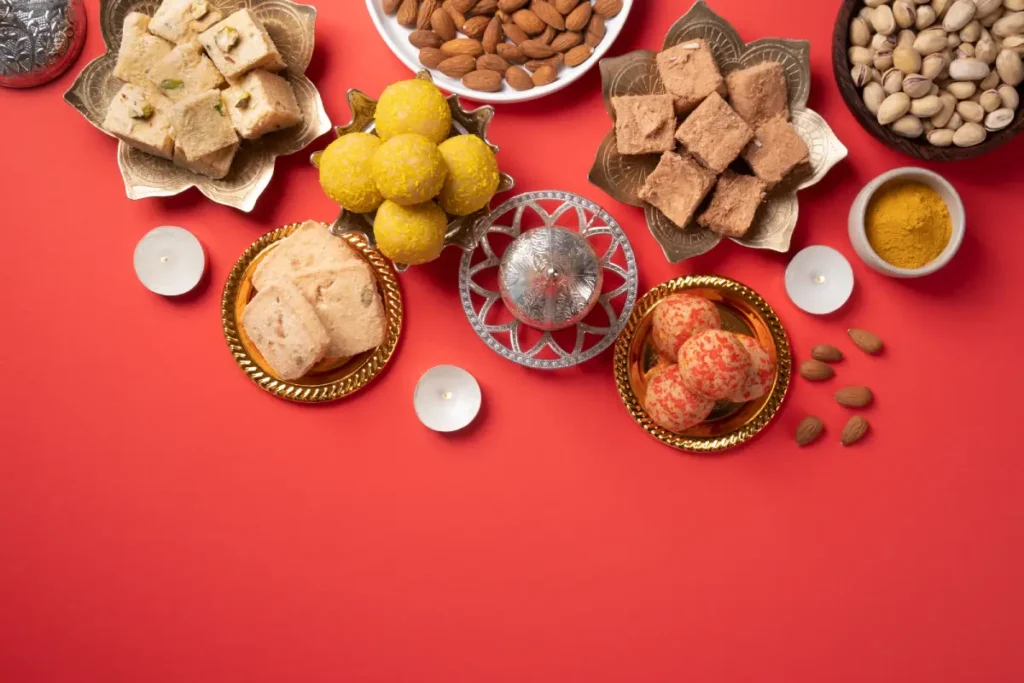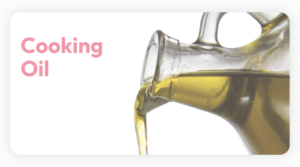5 Simple Tips to Enjoy Diwali Faral Without Spiking Blood Sugar

Diwali is the festival of lights, joy, and togetherness – but for many, it also brings a not-so-sweet challenge: managing blood sugar levels amidst irresistible faral spreads.
From laddoos and chaklis to karanjis and chiwda, these festive delicacies are high in refined carbs, sugar, and fats – a triple threat to metabolic health.
With over 100 million Indians living with diabetes and nearly 150 million more pre-diabetic, it’s time we enjoy the festival differently – not by saying “no” to sweets, but by saying “yes” to smarter, healthier choices.Here’s how you can enjoy Diwali faral without spiking blood sugar, using clean, lab-tested, Pink Tiger Verified products available on YouCare Lifestyle.
Table of Contents
1. Choose Natural, Low-GI Ingredients Over Refined Ones
Refined sugar and maida are the main culprits behind festive glucose spikes. Instead, opt for natural, low-glycemic alternatives such as dates, coconut sugar (in moderation), and jaggery blends – when balanced with protein and fiber.
You can also use natural flavoring agents like cinnamon, nutmeg, or cardamom to reduce perceived sweetness without adding sugar. These spices not only enhance aroma and flavor but also contain antioxidants that improve insulin sensitivity.
Choose Pink Tiger Verified Product Recommendations
~Millet-Based Ingredients:
Swap refined maida with Pink Tiger Verified millets like ragi, jowar, or foxtail millet flour. These low-GI, high-fiber grains balance blood sugar and add wholesome texture to festive sweets.
~Clean, Plant-Based Proteins:
Mix Pink Tiger Verified plant proteins into laddoos, energy bites, or smoothies. They’re lab-tested, non-GMO, and naturally balance macronutrients while supporting steady glucose levels.
~Use Pure Desi Ghee:
Choose verified A2 ghee over vanaspati for healthy fats that enhance metabolism and satiety without spiking insulin.
Pink Tiger Verified A2 Ghee from YouCare Lifestyle

Research published in The American Journal of Clinical Nutrition shows that low-GI diets can improve insulin sensitivity by 25–30% compared to high-GI diets – meaning smaller spikes, steadier energy, and better metabolic control.
https://academic.oup.com/ajcn/article-abstract/92/1/83/4597432?redirectedFrom=fulltext
2. Balance Every Bite – The Science of Portion and Pairing
It’s not just what you eat, but how you combine it. Pairing carbs with protein, fiber, and healthy fats slows glucose absorption and keeps you feeling full longer.
Tips to Apply This During Diwali
~Eat sweets after meals instead of on an empty stomach.
~Add nuts or roasted seeds before sweets to buffer sugar spikes.
~Use besan, oats, or ragi flour for faral instead of all-purpose flour/ maida.
A protein-rich meal provides beneficial glycemic and hormonal responses as compared to meals enriched in carbohydrate, fat or fiber, in individuals with or without type-2 diabetes (Frontiers in Nutrition, 2024)
3. Swap Refined Oils for Cold-Pressed Oils
Traditional Diwali faral is often deep-fried in refined oil – which oxidizes at high temperatures and promotes inflammation and insulin resistance. Switch to cold-pressed oils rich in antioxidants and heart-healthy fats.
Pink Tiger Verified Oils from YouCare Lifestyle

According to Harvard Health, replacing refined oils with cold-pressed alternatives can reduce LDL cholesterol by 10–15% and improve glucose tolerance.
https://www.health.harvard.edu/staying-healthy/expand-your-healthy-cooking-oil-choices
https://www.health.harvard.edu/heart-health/11-foods-that-lower-cholesterol
4. Move After You Munch – The Post-Meal Trick
Movement is the most underrated glucose management tool. Even a 15-minute walk after meals can significantly lower blood sugar levels.
Try These Festive-Friendly Activities
~Family dance nights after dinner.
~Short yoga sessions before sweets.
~Brisk evening walks with loved ones.
A Diabetologia and Nutrients (2022) study found that just 30 minutes of light walking after meals can significantly reduce post-meal glucose spikes and improve insulin sensitivity for up to 24 hours – making it one of the simplest ways to enjoy sweets without the spike.Read the full study here (PMC8912639)
5. Hydration, Sleep & Mindful Eating
Lack of hydration and poor sleep are silent triggers for elevated glucose.
Dehydration thickens your blood, reducing insulin’s efficiency, while sleep deprivation raises cortisol – increasing glucose output from the liver.
What You Can Do
~Drink 2.5-3L of water per day.
~Add natural infusions like cinnamon sticks, tulsi, or lemon slices.
~Sleep at least 7-8 hours daily – consistency matters more than duration.
A meta-analysis from Sleep Medicine Reviews found that just one night of poor sleep can increase fasting blood glucose by 10–15%. Hydration and rest are therefore as important as diet.
Healthy Diwali Faral Swaps
| Traditional Faral | Healthy Alternative |
| Maida Chakli | Baked ragi chakli |
| Sugar-laden Laddoo | Oats laddoo with jaggery |
| Fried Chivda | Roasted multigrain chivda |
| Ghee-heavy Karanji | Air-fried karanji with coconut sugar |
Conclusion:
Diwali celebrates light – and in many ways, health is the truest form of light.In a country where 1 in 3 adults lives with a lifestyle disorder, small dietary shifts during festivals can have a compounding metabolic impact.
When you choose low-GI ingredients, replace refined oils with cold-pressed fats, and rely on Pink Tiger Verified products that are lab-tested for heavy metals, purity, and label accuracy, you’re not just preventing sugar spikes – you’re protecting your long-term health.
Science is clear:
~Every 10% reduction in post-meal glucose variability lowers the risk of cardiovascular events by nearly 20% (American Diabetes Association, 2023).
~Maintaining stable blood sugar during high-calorie seasons supports gut microbiome balance, hormonal regulation, and sustained energy metabolism.
Your faral plate, when balanced mindfully, can therefore become a powerful act of prevention.
Let’s redefine indulgence -not as restriction, but as intelligent celebration.
Choose verified, clean ingredients. Cook with care. Move after meals. Rest well.
Because health isn’t about giving up sweetness – it’s about making sweetness safe again.
This Diwali, celebrate balance. Celebrate health. Celebrate with YouCare Lifestyle.
FAQs – Enjoy Diwali Without Spiking Blood Sugar
1.Why choose Pink Tiger Verified products from YouCare Lifestyle?
Pink Tiger Verified products undergo NABL-accredited lab testing for heavy metals, contaminants, and label accuracy. They’re screened for toxins and verified for ingredient purity and truthfulness, ensuring what you buy is exactly what’s on the label.
2. Are jaggery or coconut sugar safe for diabetics?
Both have slightly lower GI than refined sugar, but moderation is key. Combine with fiber-rich flours like oats or ragi, or consume alongside protein to reduce glucose spikes.
3.What’s the best oil for frying Diwali faral?
Cold-pressed groundnut or coconut oil. These oils retain natural antioxidants, don’t oxidize easily, and are Pink Tiger Verified for purity and safety.
4.What are the signs my blood sugar has spiked post-festival?
Watch for fatigue, increased thirst, sugar cravings, or sluggishness after meals. A simple glucometer check or CGM (Continuous Glucose Monitor) can confirm spikes.
5.Can clean eating really make a difference in festive health?
Absolutely. Replacing refined ingredients with clean, lab-tested Pink Tiger Verified products ensures fewer toxins, stable energy, and long-term metabolic wellness.
References
Harvard T.H. Chan School of Public Health. (n.d.). Fiber and blood sugar control. The Nutrition Source. Retrieved from https://nutritionsource.hsph.harvard.edu/carbohydrates/fiber/
DiPietro, L., et al. (2022). The effects of postprandial walking on the glucose response after meals with different characteristics. Nutrients, 14(2), 350. https://pubmed.ncbi.nlm.nih.gov/35268055/
DiPietro, L., et al. (2018). The effects of postprandial exercise on glucose control in individuals with type 2 diabetes. Sports Medicine, 48(2), 277–286. https://pubmed.ncbi.nlm.nih.gov/29396781/
Brand-Miller, J., et al. (2020). Postprandial blood glucose response: Does the glycaemic index matter? American Journal of Clinical Nutrition, 111(2), 403–414. https://pmc.ncbi.nlm.nih.gov/articles/PMC7195487/
St-Onge, M. P., & Mikic, A. (2023). The interrelationship between sleep, diet, and glucose regulation. Sleep Medicine Reviews, 68, 101719. https://www.sciencedirect.com/science/article/abs/pii/S1087079223000448